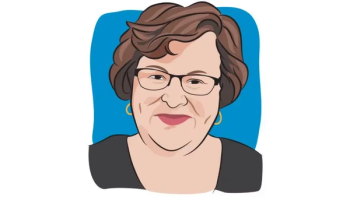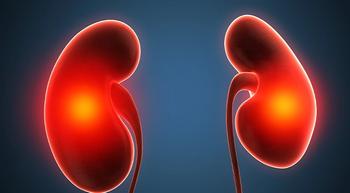
Social Support Is Key During BiTE Therapy for Blood Cancers
An oncology nurse discusses what patients should know before BiTE therapy, and what they can do if they do not have a social support system.
The use of bispecific T cell engagers (also known as BiTE) therapies has been increasing to treat patients with blood cancers. However, there are side effects and other factors to consider when deciding on the treatment type, explained Kathy Mooney.
Mooney, clinical program director at Johns Hopkins Hospital and Johns Hopkins Health System, sat down with CURE® at the 49th Annual Oncology Nursing Society Congress to discuss BiTE therapies.
“It’s an intense model of care, especially in the beginning. Its frequent dosing [and] there are harsh side effects that the patients need to be aware of,” Mooney said. Common side effects from BiTE therapy include neurotoxicity (nervous system damage) and cytokine release syndrome, when there is an influx of inflammatory molecules, called cytokines, in the bloodstream.
READ MORE:
“So, ensuring that they have good social support is probably key to the initial step-up dosing,” Mooney said. Social support is important because it can help look for signs of side effects, transportation assistance and communication with doctors.
Step-up dosing means that a small amount of the drug will be administered at first, and the dosage increases as the treatment progresses.
However, for patients who do not have strong social support at home, Mooney said that does not mean the BiTE therapies are out of the question. She advised these patients to be open with their care teams if this is the case. Assistance programs exist, such as those that can help with lodging or transportation. Additionally, for these patients, maybe it is best to receive BiTE therapy in the inpatient (hospital) setting, rather than outpatient (in a clinic outside of the hospital), Mooney said.
Transcript:
It's an intense model of care, especially in the beginning, it's frequent dosing [and] there are harsh side effects that the patients need to be aware of. So ensuring that they have good social support is probably key to the initial step-up dosing. We need to make sure that they are safe, and that they can be transitioned quickly to care areas when they need that and have somebody looking out for them for any of those signs and symptoms that may occur.
Some of these options are also … long treatment. There's no end date for the treatment. So making sure they're aware that this is going to be an intense therapy for many months, many weeks, and making sure they feel comfortable with the ability to continue that care [is important].
For more news on cancer updates, research and education, don’t forget to




